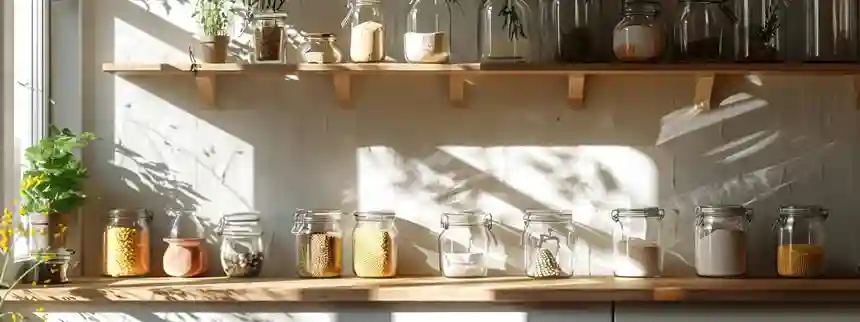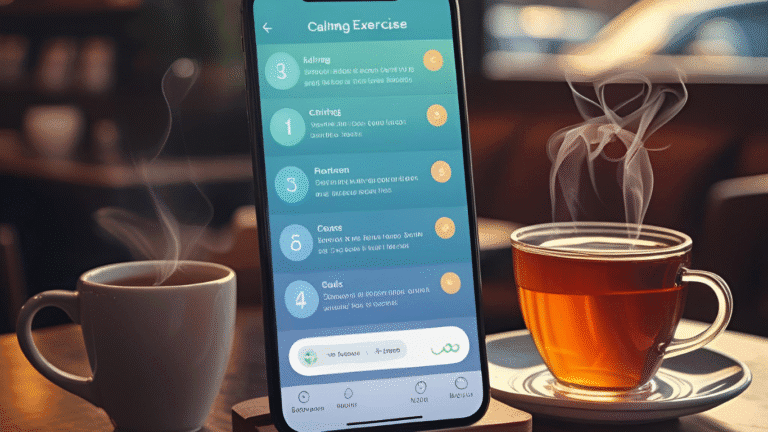Toxic Free Living: Cut Daily Chemical Exposure
Toxic Free Living means limiting contact with harmful chemicals in household products, food packaging, and personal care items. It’s based on environmental health science, which studies how toxins impact the human body, even in small amounts.
Common toxins include phthalates, formaldehyde, BPA, VOCs, and PFAS. These are found in plastics, furniture, paints, and cookware. They may disrupt hormones, damage lungs, or affect reproductive health.
Exposure can happen through air, skin, or food. Many U.S. chemicals are poorly regulated. Understanding where toxins exist helps people reduce risks and make safer choices at home.
Why Toxic Free Living Is Essential for Long-Term Health
The human body can handle occasional exposure to harmful substances. But constant contact can lead to serious health problems. Toxic Free Living aims to reduce that constant burden by removing common chemical threats from daily life.
Many toxins are linked to chronic conditions like asthma, cancer, hormonal imbalance, and developmental delays. Even small exposures can build up over time and create health risks. Studies show that long-term exposure to low-level toxins may alter how cells grow and function.
Endocrine disruptors like BPA and phthalates can interfere with hormone production. This can affect fertility, thyroid function, and metabolism. VOCs, often inhaled indoors, may damage the lungs and contribute to asthma or allergies. PFAS have been detected in blood samples across the U.S. These chemicals may impact liver health, immune response, and pregnancy outcomes.
Some individuals face higher risks than others. Pregnant people, children, and older adults are more vulnerable to long-term chemical effects. Their bodies are more sensitive, and exposure can have lasting consequences.
In the U.S., not all chemicals are fully tested before entering the market. Many are approved without long-term safety data. Toxic Free Living fills that regulatory gap by encouraging personal prevention.
Health experts agree: reducing toxic exposure lowers your overall risk of disease. Small changes, like choosing safer materials and improving indoor air, can protect your body’s systems. Long-term benefits may include better sleep, fewer allergies, and improved immune health.
Toxic Free Living is not about fear. It’s about awareness, education, and control over your environment. By understanding risks and acting early, individuals can build a healthier future for themselves and their families.
Toxic Free Living in the American Home: Key Sources of Exposure
Many harmful chemicals are found in common household items. Toxic Free Living begins by identifying these sources in everyday spaces.
In the kitchen, non-stick cookware, plastic containers, and canned foods may contain BPA or PFAS. These chemicals can leach into food and drinks. Cleaning sprays, dish soaps, and air fresheners often include synthetic fragrances and VOCs. These contribute to poor indoor air quality.
In bathrooms, shampoos, lotions, and cosmetics may contain parabens, phthalates, and formaldehyde-releasing agents. These ingredients are linked to hormonal changes and skin irritation. Vinyl shower curtains and some bathroom cleaners also release VOCs into the air.
Bedrooms may seem safe but contain hidden risks. Flame-retardant chemicals are often found in mattresses, pillows, and upholstered furniture. These can release toxins through dust over time. Synthetic fabrics and wrinkle-resistant treatments may also contain formaldehyde.
The laundry room poses exposure risks as well. Detergents, fabric softeners, and dryer sheets often contain fragrance compounds and preservatives. These chemicals cling to clothes and come in contact with skin daily.
In garages or basements, paints, adhesives, and pesticides may emit toxic fumes. These VOCs can linger in enclosed spaces for long periods. Older homes may also contain asbestos or lead in pipes, paints, or insulation.
Even household dust plays a role in exposure. It can carry traces of flame retardants, heavy metals, and pesticide residues. These particles are easily inhaled, especially by children.
Understanding where toxins exist is the first step toward change. Toxic Free Living focuses on awareness and reduction, not perfection. By identifying the high-risk areas in your home, you can start making safer choices one room at a time.
How U.S. Regulations Affect Toxic Free Living
Many people assume products on store shelves are fully tested for safety. In the U.S., this is not always true. Toxic Free Living becomes necessary because federal oversight is often limited or outdated.
The Environmental Protection Agency (EPA) and Food and Drug Administration (FDA) regulate chemicals in different ways. However, many substances enter the market without long-term testing. Existing laws allow thousands of chemicals to be used with little safety data.
The Toxic Substances Control Act (TSCA) governs most industrial chemicals. It was updated in 2016 but still faces enforcement challenges. Many older chemicals remain in use without full evaluation under modern standards.
The FDA oversees cosmetics and food contact materials. Unlike drugs, cosmetics do not require pre-market approval. Companies are not always required to prove safety before selling products. This leaves gaps in consumer protection.
Labeling requirements are also inconsistent. Some toxic ingredients may not be listed on product labels. “Fragrance” can legally include dozens of undisclosed compounds. This makes it difficult for buyers to identify risks.
Certain chemicals banned in other countries remain legal in the U.S. Examples include formaldehyde in hair products and some pesticides used in food production. These regulatory differences highlight the need for personal vigilance.
States sometimes pass their own stricter rules. However, national standards vary widely. Without unified action, consumers must rely on education and personal decision-making.
Toxic Free Living addresses this gap. It empowers individuals to act even when regulations fall short. Understanding these limits helps people make informed choices about what enters their home and body.
Toxic Free Living in Cleaning Practices
Cleaning products are major sources of indoor chemical exposure. Toxic Free Living encourages safer practices to reduce harmful ingredients in daily routines.
Many household cleaners contain substances that may irritate the skin, lungs, or eyes. Some also release volatile organic compounds (VOCs) that pollute indoor air. These chemicals are often present in spray disinfectants, floor cleaners, and degreasers.
Ingredients like ammonia, chlorine bleach, and formaldehyde are commonly found in cleaning products. They can cause headaches, respiratory issues, and long-term irritation. Repeated exposure may also impact people with asthma or allergies.
“Fragrance” is another concern. It may include dozens of unlisted compounds, some linked to hormone disruption. These substances can remain in the air long after use.
Surface cleaners, glass sprays, and toilet products may also contain preservatives and dyes. These additives serve cosmetic purposes but often offer no cleaning benefit. They may instead increase the chemical burden in a home.
Labels are not always helpful. Some toxic ingredients are not required to be disclosed on packaging. Terms like “natural” or “green” are not legally defined. This makes it hard to assess product safety from branding alone.
Toxic Free Living recommends simplified ingredients and more intentional use. Choose products with short, clear labels and no artificial fragrances. Reduce use of sprays, which increase airborne particles. Avoid mixing cleaners, which can create toxic reactions.
Ventilation is key. Open windows or use fans when cleaning enclosed spaces. This reduces buildup of airborne chemicals and improves indoor air quality.
Cleaning does not require complex products. Many people find success using basic, non-toxic ingredients for everyday tasks. The goal is not perfection—but safer habits that protect long-term health.
Toxic Free Living and Indoor Air Quality
Indoor air quality plays a major role in overall health. Toxic Free Living includes managing air to reduce chemical exposure at home.
The Problem with Indoor Air
Indoor air can be more polluted than outdoor air. Chemicals from building materials, furniture, and household products collect in enclosed spaces. Without good airflow, these toxins linger and accumulate.
Volatile organic compounds (VOCs) are a major concern. They are released from paint, carpet, adhesives, and cleaning supplies. VOCs can cause headaches, eye irritation, and long-term respiratory issues.
Synthetic fragrances are also common air pollutants. Air fresheners, scented candles, and plug-ins emit chemical compounds. Some may disrupt hormones or trigger asthma.
Dust as a Chemical Carrier
Household dust is not just dirt. It often contains flame retardants, heavy metals, pesticides, and microplastics. These substances settle on furniture, floors, and children’s toys.
Dust becomes airborne when disturbed. Inhalation is a major route of exposure. Children are especially at risk due to frequent hand-to-mouth behavior.
Regular dusting and vacuuming help. Use damp cloths to trap dust instead of spreading it. Choose vacuums with HEPA filters to capture fine particles.
Improving Indoor Air
Good ventilation is essential. Open windows whenever possible, especially during and after cleaning. Exhaust fans in kitchens and bathrooms also help reduce indoor humidity and chemicals.
Avoid indoor smoking, which adds over 7,000 chemicals to the air. Limit use of scented items like sprays, candles, or incense.
Bringing in certain plants may help improve air quality, though they are not a substitute for ventilation. More importantly, reduce the source of pollutants.
Toxic Free Living means reducing both visible and invisible threats. Clean air supports better breathing, stronger immunity, and overall wellness.
Toxic Free Living Through Food and Storage Habits
Everyday food choices can affect long-term chemical exposure. Toxic Free Living extends into kitchens, containers, and meal prep practices.
Packaging and Processed Food
Many processed foods are wrapped in packaging that contains harmful chemicals. Some plastics and liners contain bisphenols or phthalates. These can migrate into food, especially when heated or stored long-term.
Canned foods often have linings that contain BPA or similar compounds. These substances may act as endocrine disruptors and interfere with hormonal function. Choosing fresh or frozen alternatives helps reduce exposure.
Microwaveable containers and single-use plastics may release toxins when heated. This is especially true with older or scratched containers.
Safe Storage Practices
Toxic Free Living includes safer food storage habits. Glass, stainless steel, and uncoated ceramic are better options for storing food. They do not leach chemicals when exposed to heat or acidic contents.
Avoid storing oily or hot foods in plastic. Heat and fat increase chemical migration. Use paper wraps or silicone covers when plastic-free options are needed.
Never reuse single-use containers not designed for food. They may break down and release compounds not meant for repeated contact with food.
Reducing Toxins in Food Choices
Pesticide residues are another concern in the U.S. diet. Washing produce with water removes surface dirt but not all residues. Choosing organic for certain fruits and vegetables helps reduce intake of chemical residues.
The Environmental Working Group publishes an annual list of produce with the highest and lowest pesticide levels. This guide helps prioritize organic purchases for families on a budget.
Toxic Free Living supports informed eating habits, not perfection. By making small changes in how food is stored and selected, families can reduce their daily exposure significantly.
Personal Care and Toxic Free Life
Personal care products are used daily, often multiple times a day. Toxic Free Living involves choosing safer options for skin, hair, and hygiene routines.
Hidden Chemicals in Common Products
Many personal care items contain synthetic chemicals linked to health concerns. These include shampoos, lotions, deodorants, toothpaste, and cosmetics. Repeated use increases the chance of chemical absorption through the skin.
Parabens are preservatives used to prevent mold and bacteria. Some studies suggest they may mimic estrogen and interfere with hormonal activity.
Phthalates are often found in fragrances. They are linked to reproductive issues and developmental concerns, especially in children.
Triclosan, once common in antibacterial soaps, may affect hormone regulation and contribute to antibiotic resistance. Though restricted in some products, it may still appear in others.
Formaldehyde-releasing agents preserve liquid products. Over time, they can irritate skin, eyes, and the respiratory system.
Label Reading and Safer Habits
Reading ingredient labels is key to making informed choices. Watch for long, complex names and words like “fragrance” or “parfum,” which may mask chemical mixtures.
Choose unscented over fragranced versions whenever possible. Unscented products often contain fewer masking agents and synthetic additives.
Limit the number of products used daily. Fewer products reduce overall exposure and simplify routines.
Store products away from heat and sunlight. Chemical breakdown can occur in poor conditions, leading to higher exposure risks.
Avoid products with unnecessary colors or shimmer. These features often rely on synthetic dyes or mica-based additives, which can carry additional concerns.
Toxic Free Living in personal care is about understanding what touches the skin. Small changes support better skin health, hormone balance, and long-term wellness.
Supporting Toxic Free Life on a Budget
Toxic Free Living is often seen as expensive, but it does not have to be. Many low-cost changes reduce chemical exposure without burdening your wallet.
Start with the Basics
Focus on high-impact areas first. Cleaners, food storage, and personal care items are great starting points. Swap one product at a time instead of replacing everything at once.
Use what you already have. Avoid waste by finishing safer products before buying new ones. Gradual change helps with long-term habits and budgeting.
Simplify routines. Most homes do not need five cleaners or ten skincare items. Reducing product use lowers cost and exposure.
Affordable Alternatives
Many safe alternatives are inexpensive and easy to find. White vinegar, baking soda, and castile soap clean most surfaces. These items cost less than branded “green” products.
Use reusable cloths instead of paper towels. This reduces long-term spending and waste. Glass jars from food packaging make great storage containers.
Public libraries and community groups often offer free classes on non-toxic living. These resources provide valuable tips without added cost.
DIY recipes for cleaners and body care items are everywhere online. Most use basic ingredients like coconut oil, lemon juice, or essential oils.
Shop in bulk when possible. Buying fewer packaged goods saves money and reduces chemical-laden wrappers.
Make Informed Choices
Use online databases to check product safety. Sites like EWG’s Skin Deep or MADE SAFE give helpful ratings. These tools are free and easy to use.
Toxic Free Living is not about buying more—it’s about choosing better. Start small, think long-term, and build habits that support health and savings.
FAQs:
1. What does Toxic Free Living really mean?
Toxic Free Living means reducing exposure to harmful chemicals in air, food, water, and personal items used daily.
2. Are all chemicals harmful?
No. Not all chemicals are dangerous. Toxic Free Living focuses on limiting exposure to those linked to long-term health effects.
3. How can I reduce indoor chemical exposure?
Ventilate your home. Use fewer fragranced products. Clean with non-toxic ingredients like vinegar and baking soda.
4. Is organic food required for Toxic Free Living?
Not always. Prioritize organic for produce with high pesticide levels. Wash all fruits and vegetables thoroughly.
5. Do I need to throw out all plastic containers?
Not immediately. Replace old or damaged plastic. Use glass or stainless steel for hot or fatty foods.
6. What personal care items should I check first?
Start with deodorant, shampoo, lotion, and anything used daily. Look for fragrance-free and paraben-free labels.
7. How can I afford non-toxic changes?
Swap items slowly. Use DIY cleaners. Choose multipurpose products. Focus on what touches food or skin first.
8. Are natural products always safer?
Not always. “Natural” is not a regulated term. Check ingredients and use trusted sources for product ratings.
9. Do air purifiers help with toxic air?
They help reduce dust and particles, not all chemicals. Good ventilation and limiting pollutant sources are more effective.
10. Where can I learn more?
Use U.S.-based sources like the Environmental Working Group, CDC, or EPA for facts about safer living.
Final Thoughts
Toxic Free Living supports long-term health through informed daily choices. It is not about fear or perfection, but about awareness and action. Reducing chemical exposure helps protect your skin, lungs, hormones, and even your future children. Every small change adds up—whether it’s swapping a cleaner, reading labels, or choosing safer storage. You do not need to overhaul your life or spend more. Focus on one area at a time. Learn what ingredients to avoid and stay curious about what enters your home, body, and air. Toxic Free Living is not just a trend. It is a lifelong path toward wellness and a cleaner world.
Have questions about Toxic Free Living or tips to share? Leave a comment below.
Your insights can help others make better choices. Let’s build a safer, healthier community—one step at a time.
Disclaimer:
This blog is for informational purposes only. It does not offer medical, legal, or professional advice. Always consult a qualified expert or healthcare provider before making changes to your health, diet, or household routines. The content reflects general research and public information on toxic exposure but may not apply to every individual or situation.

Michael Reyes is a versatile blogger with a primary focus on farming and sustainable living. Growing up close to nature, he developed a deep interest in agriculture and enjoys sharing practical tips on backyard farming, modern cultivation techniques, and eco-friendly practices. While farming remains his specialty, Michael also writes on a wide range of topics, from lifestyle and travel to everyday inspiration, making his work relatable to a broad audience.
Outside of writing, Michael enjoys spending time outdoors, experimenting with new farming methods, and exploring different cultures through food and travel. His approachable voice and well-researched insights make his blogs both informative and engaging.


